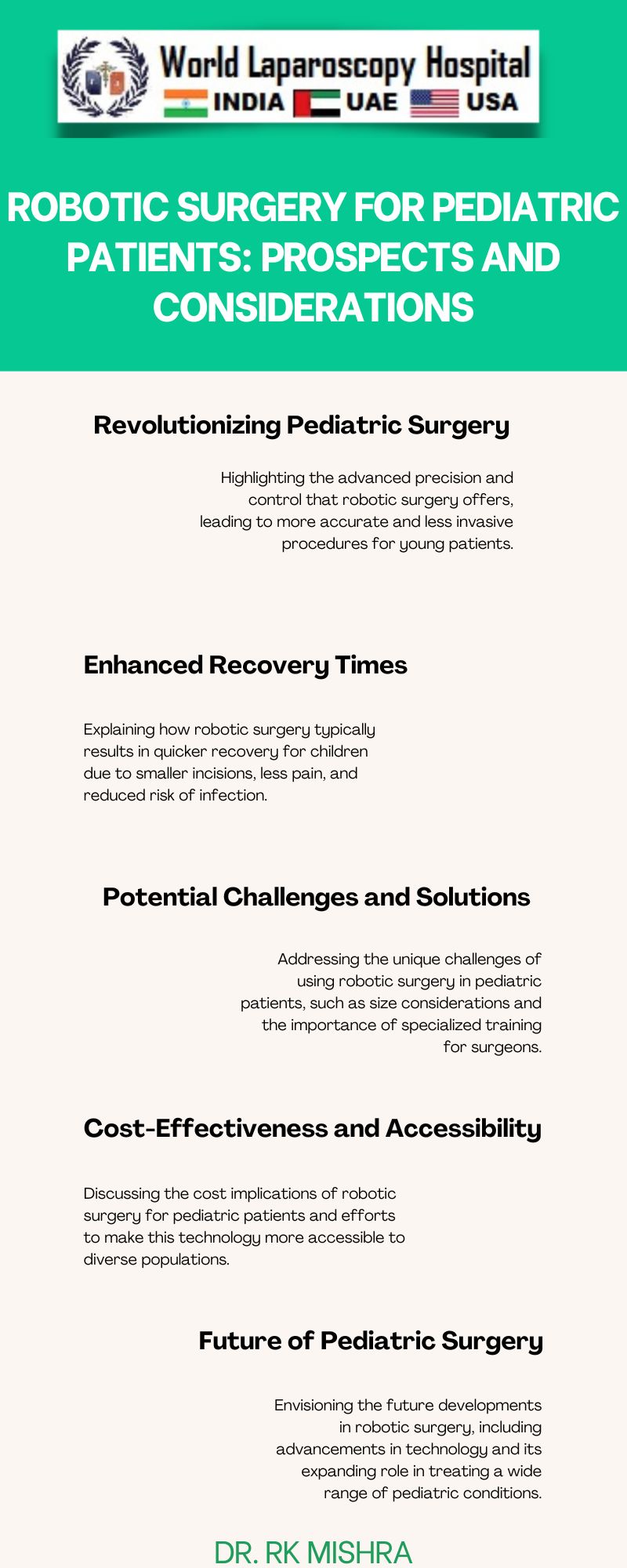Robotic surgery, a groundbreaking development in the field of medicine, has been progressively advancing towards pediatrics. This essay delves into the burgeoning arena of robotic surgery for pediatric patients, examining its prospects and the various considerations it entails.

1. The Advent of Robotic Surgery in Pediatrics
Robotic surgery, initially utilized predominantly in adult patients, has gradually found its way into pediatric care. The precision and flexibility of robotic systems like the da Vinci Surgical System have made complex pediatric surgeries more feasible. This transition is significant considering the anatomical and physiological differences between children and adults, which necessitate a distinct approach in surgical interventions.
2. Prospects of Robotic Surgery in Pediatrics
The prospects of robotic surgery in pediatric care are substantial.
- Enhanced Precision and Control: Robotic systems offer unparalleled precision, essential in operating on smaller, more delicate pediatric anatomies.
- Minimally Invasive Procedures: Robotic surgery allows for minimally invasive procedures, which is particularly beneficial for children as it leads to less postoperative pain, quicker recovery, and minimal scarring.
- Expanded Surgical Capabilities: Complex procedures that were once deemed too risky or impossible in pediatrics are now feasible due to the advanced capabilities of robotic systems.
- Improved Outcomes: Studies have shown that robotic surgery can lead to better outcomes in pediatric patients, including reduced complications and shorter hospital stays.
3. Considerations and Challenges
While the prospects are promising, several considerations and challenges need addressing:
- High Costs: Robotic surgery systems are expensive to acquire and maintain, making them less accessible for many healthcare facilities, especially in developing regions.
- Learning Curve: Surgeons require extensive training to adeptly operate these sophisticated systems, which can be a significant investment in time and resources.
- Size of Instruments: The current robotic systems are designed with adults in mind, thus the instruments may not always be ideally sized for pediatric patients.
- Ethical and Legal Concerns: As with any new medical technology, there are ethical and legal implications, particularly regarding consent and the use of such advanced technology in children.
4. Future Directions
The future of robotic surgery in pediatrics is bright but requires concerted efforts from various stakeholders:
- Developing Pediatric-Specific Instruments and Systems: There is a need for robotic systems specifically designed for pediatric patients.
- Research and Clinical Trials: Ongoing research and clinical trials are crucial to validate the efficacy and safety of robotic surgery in children.
- Training and Education: Enhancing training programs for surgeons and medical staff to become proficient in pediatric robotic surgery is vital.
- Addressing Cost and Accessibility Issues: Efforts should be made to make robotic surgery more affordable and accessible across different regions and healthcare systems.
Conclusion
Robotic surgery for pediatric patients holds immense promise, offering the potential for safer, more precise, and less invasive surgical interventions. However, realizing its full potential requires addressing the existing challenges and considerations, including cost, training, and the development of pediatric-specific technologies. With ongoing advancements and collaborative efforts in the medical community, robotic surgery could redefine pediatric surgical care, offering improved outcomes for our youngest patients.